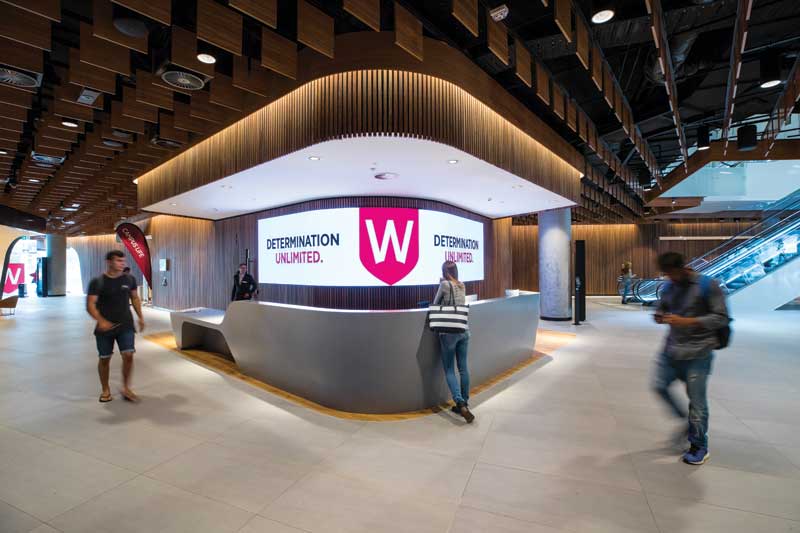Choosing colours
A study by the Institute for Color Research found people make lasting judgments about content, with a disproportionate share of these judgments dictated by the colours used to convey the content’s message. Well-designed digital signage content reflects the implications of colour research, with a strategy crafted to attract attention, spark an emotional response and call the audience to action.
To determine this strategy, it is recommended to start by choosing a pair of colours opposite each other on the standard 12-spoke wheel (see Figure 1). This will provide a high degree of contrast, ensuring the content will stand out.
Next, deploying these two colours in a ratio of roughly 7:3 will help establish one as dominant and the other as a secondary accent. Finding the right balance for the colour scheme is imperative in creating professional, direct and well-focused content for digital signage. This is why it is worthwhile to spend time choosing the right colours in the first place.
Structuring the strategy
‘Content is king’ in the world of digital signage because it not only promotes a brand, but also sells a story. With shrinking attention spans, a well-structured strategy is key to a successful implementation.
Today’s digital signage networks can use ‘beacons’ to identify audiences and trigger content specific to their interests. When an individual is treated to a more personalized experience, he/she feels more valued by the organization behind the content and is likely to see it in a more favourable light.
Another way to use content to speak directly to individuals is interactivity. This option allows audiences to custom their experience on their own. By giving them the means to participate, the content will foster a stronger connection with the brand.
Optimizing viewing
With scrupulously binned LEDs and exceptional digital signage content, the next step is to determine the optimal location. This may be easier than it sounds, given the nature of the technology.
Digital signage network managers are increasingly choosing to install large-format LED displays because, compared to other technologies, they are brighter and better
at attracting attention. Further, they are uniquely equipped to engage audiences from an array of viewing distances and angles.
Indeed, the content on an LED display can be viewed from almost anywhere. The key is to optimize the display for off-axis viewing, i.e. from the side, away from centre. This is especially important when content is viewed while the audience is in motion, e.g. walking past the display.
If a display only has an off-axis range of 90 degrees, i.e. 45 degrees from centre in each direction, then people walking past it will soon notice the content is no longer clearly visible. Other displays can provide an off-axis range of 160 degrees, i.e. 80 degrees from centre in each direction, for four times the total visibility (see Figure 2). The longer people can see the content, the more likely it is to make an impression.
Configuring content
With a customized system, rather than an off-the-shelf screen, the display can be built with non-standard dimensions to fit a specific space for a specific purpose. Using LEDs as building blocks means a digital display can be any shape or size. The standard screen aspect ratio of 16:9 is appropriate for generic content, but the best fit for a given application may be completely different, from a square screen to one that is far wider than it is high. The content can be configured or ‘mapped’ accordingly.
The resolution of an LED display can be defined by its number of pixels. The threshold for a high-definition (HD) display, for example, is 1,920 x 1,080 pixels, which reflects the aforementioned 16:9 ratio. It is entirely possible, however, for a display to represent different dimensions, in which case the content will need to be adjusted to those parameters.
Joe’ Lloyd is vice-president (VP) of global marketing for NanoLumens, which manufactures LED-based digital displays. For more information, visit www.nanolumens.com.







